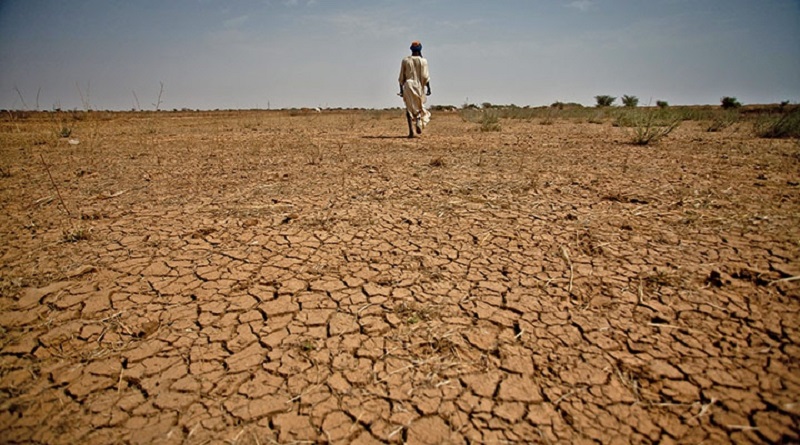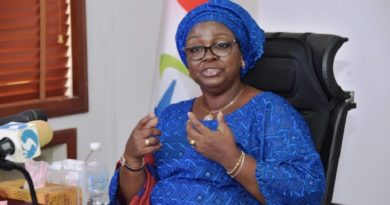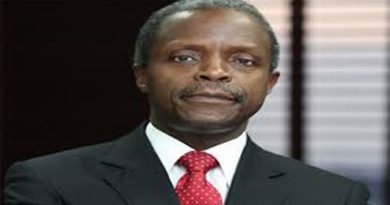Conference adopts Windhoek Declaration to tackle drought in Africa
African Drought Conference hosted by the government of Namibia recently ended with adaption of “The Windhoek Declaration for Enhancing Resilience to Drought in Africaâ€. The declaration states the commitments to implement the Strategic Framework for Drought Risk Management and Enhancing Resilience in Africa; to establish a continent-wide African Network with national institutions for Drought Monitoring and Early Warning Systems; and to convene biennial African Drought Conference to be held concurrently with the African Drylands Week to consider progress of the implementation of the Strategy adopted in Windhoek in August 2016, in order to promote investment among others.
The conference was one of the distinct outcomes of the Namib Declaration adopted at the UNCCD COP 11/Decision 36 which emphasized a stronger UNCCD for land degradation neutrality with increasing focus on mitigating the impacts of droughts and the development of national drought policies.
The Conference attended by Ministers, Heads of Delegation and Experts, recognised the alarming impacts of the recent 2015/2016 El Nino events as one of the most severe in recent decades across Africa.
It also adopted the Strategic Framework for Drought Risk Management and Enhancing Resilience in Africa, which proposes for a Drought Resilient and Prepared Africa (DRAPA) to be implemented at national level and guided by the following six principles: Drought policy and governance for drought risk management;  Drought monitoring and early warning; and Drought vulnerability and impact assessment.
Others are drought mitigation, preparedness, and response; Knowledge management and drought awareness; and reducing underlying factors of drought risk.
The Conference reaffirmed the call made for “a stronger UNCCD for a Land Degradation Neutral (LDN) worldâ€, under the Namiba Declaration adopted during the UNCCD COP 11 in Windhoek, September 2013, in which the Parties further decreed assurance to enhance sustainable land management and improve livelihoods at global, regional, national and especially at the local level.
Participants declared commitment to:
- Implement the Strategic Framework for Drought Risk Management and Enhancing Resilience in Africa, which proposes a Drought Resilient and Prepared Africa (DRAPA);
- Request the African Group Chair in collaboration with Namibia and the UNCCD African bureau members to ensure that a draft decision for the next Committee for the Review of the Implementation of the Convention (CRIC)be submitted and considered for negotiation and adopted by the next UNCCD Conference of Parties (COP);
- Request the AU Commission with support from the Government of Namibia to ensure that the Strategic Framework for Drought Management and Enhancing Resilience in Africa be adopted by the relevant bodies of the African Union(AU)and its subsequent endorsement at the AU Summit;
- 4) Call upon the AU Heads of State and Governments to adopt a decision under the framework of the UNCCD to develop a binding protocol on Drought Risk Management for Enhancing Resilience to be submitted for consideration to COP 13 in 2017;
- 5)Establish a  core team  in  Africa, under  the leadership  of  an appropriate organ  of the  AU, to support operationalization of the Strategy and the pronouncements contained in this Declaration;
- 6)Establish a continent-wide African Network with national institutions for Drought Monitoring and Early Warning Systems, and strengthen existing regional, sub-regional, and national EWSs, with a view to facilitate timely drought information, vulnerability and impact assessment, and mitigation measures at the country, regional and continental levels.
- Explore existing and innovative financing opportunities, systematically and strategically tap into existing  financing opportunities, in particular the climate change adaptation financing and other financing mechanisms including private sector;
- 8 Allocate adequate resources for enhancing African drought resilience within the existing regional, sub-regional, and or national investment funds, and explore options to: a. Catalyse and strengthen existing drought, emergency and disaster funds; and  Appeal for a window for enhancing African drought resilience within the LDN Fund and any others.
- 9) Request all African countries and partners to ensure that the implementation of the Strategic Framework is considered as part of national SDG implementation frameworks and enhance synergies amongst the existing international agreements and other Conventions particularly amongst the Rio Conventions, e. the UNCBD, UNCCD and UNFCCC.
- 10) Promote an inclusive empowerment agenda in all aspects targeting the vulnerable groups, such as the people living with disability, indigenous and marginalized communities, youth, the elderly men and women, in drought resilience building to ensure that they are fully equipped (systemically, institutionally and individually) to deal with drought.
- 11) Operationalize Article 19 of the AU Youth Charter on Sustainable Development and Protection of the Environment by engaging with the youth as future African leaders, ecosystem stewards, and change-makers to enable transformation in combating drought, and addressing the interrelationships between DLDD, water use and management through  generational  continuity  and  further  to  facilitate  an  African  Youth  Environmental Conference.
- 12 )Invite all International Financial Institutions (IFIs), the AfDB, Bilateral and Development Partners, the UN Agencies, amongst others, the WMO, UNCCD, FAO, UNDP, UNOOS A, WFP, UNEP,UNESCO,UNICEF, the  Red Cross Red Crescent Movement, public and private sector, and civil society to take into account the outcomes of the ADC and support Member States to implement DRAPA at continental, regional, sub-regional, and national levels consistent with the national regulatory frameworks.
- 13)Request the UNCCD Secretariat and its Global Mechanism and partners including the Global Environmental Facility, Green Climate Fund, Adaptation Fund, and other funding mechanisms to support each country to develop a National Strategic Framework for Drought Management and Enhancing Resilience in Africa as part of enabling activities;
- Convene biennial African Drought Conference to be held concurrently with the African Drylands Week to consider progress of the implementation of the Strategy adopted in Windhoek in August 2016,in order to promote investment opportunities.




